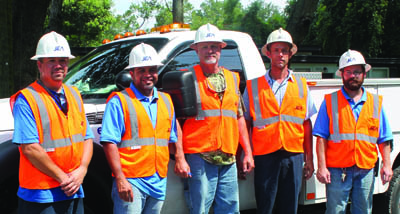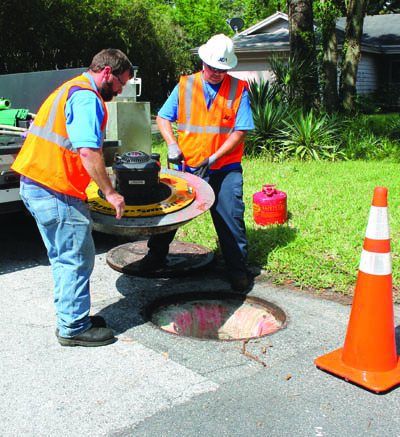JEA performs smoke test in San Jose
Posted on August 7, 2014 By Editor Articles, Neighborhood News, Top Stories

The JEA tested sanitary sewer lines in the San Jose/Lakewood area last month to identify areas within the JEA sanitary sewer system that may be allowing unwanted infiltration of water, usually from rain or irrigation, into the system.
By identifying these areas, JEA is able to reduce the amount of water it is required to treat at its reclamation facilities, thereby reducing operating costs. In the process, JEA is also able to sometimes identify private plumbing issues with individual homes and businesses.
“The feedback we’re getting is good,” said Greg Corcoran, JEA project outreach coordinator. “We think it’s a real advantage as we get to figure out if there are any problems with our lines and also help out our customers while we’re here.”
The smoke used for this work is very similar to condensed air and is not harmful to people or pets. Smoke will not appear in customers’ homes or businesses unless there are dry fixtures or issues related to their private sewer systems. The rising smoke alerts the testing crew to potential problems which they promptly investigate. Customers are notified through door-hangers if plumbing issues are discovered on private property.

JEA crew places on manholes a special machine designed to blow white, harmless, non-toxic smoke into the sanitary sewer system through sewer manholes. The smoke travels through the sewer system and escapes by rising through openings such as JEA pipes that need to be repaired, sewer clean-outs without caps, roof vent stacks and private plumbing
“JEA is having an infiltration of water. Any time a big storm hits, it spikes our system telling us we are getting more water coming in than going out. That tells us that there may be a broken pipe or something tied into our sewer lines bringing water into the sewer,” said Dave Velez, crew leader.
Smoke testing is done also when a consumer complains of a bad odor in a home. Smoke escaping from around the toilet may mean a broken wax ring around the toilet.
Depending on the size of the area (between manholes), the smoke test can last up to 30 minutes. While that’s in progress, crew members walk the street looking for visible signs of smoke coming from vents in the homes and businesses and storm drains.




 (No Ratings Yet)
(No Ratings Yet)




